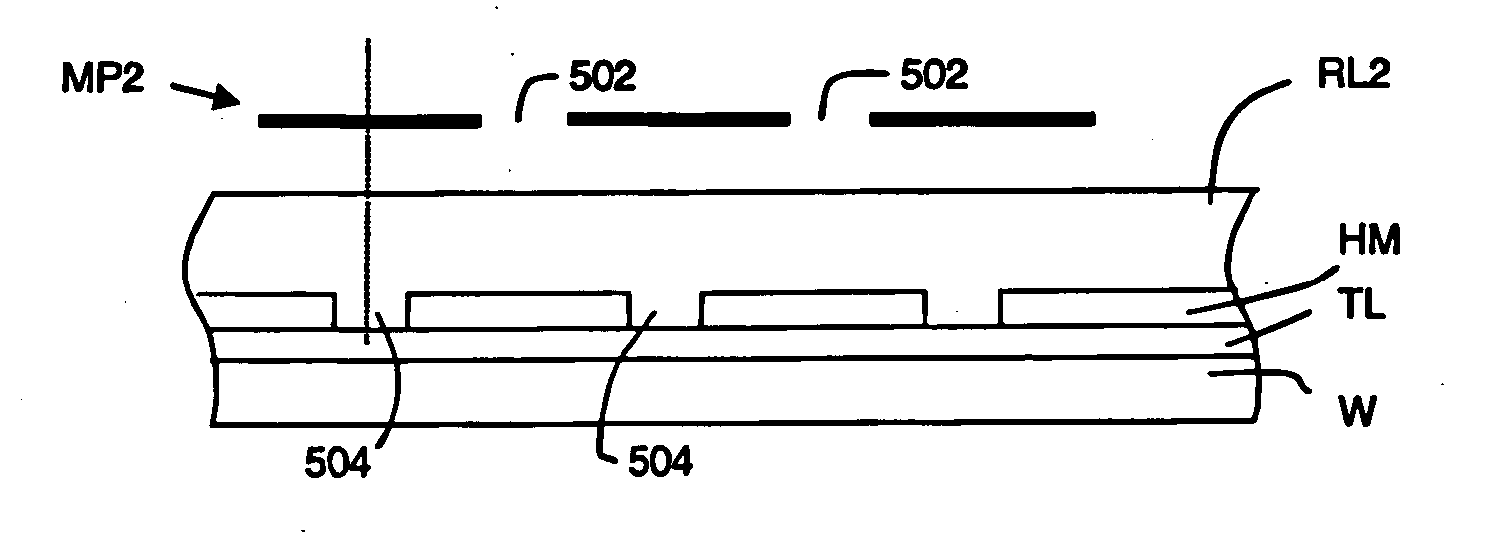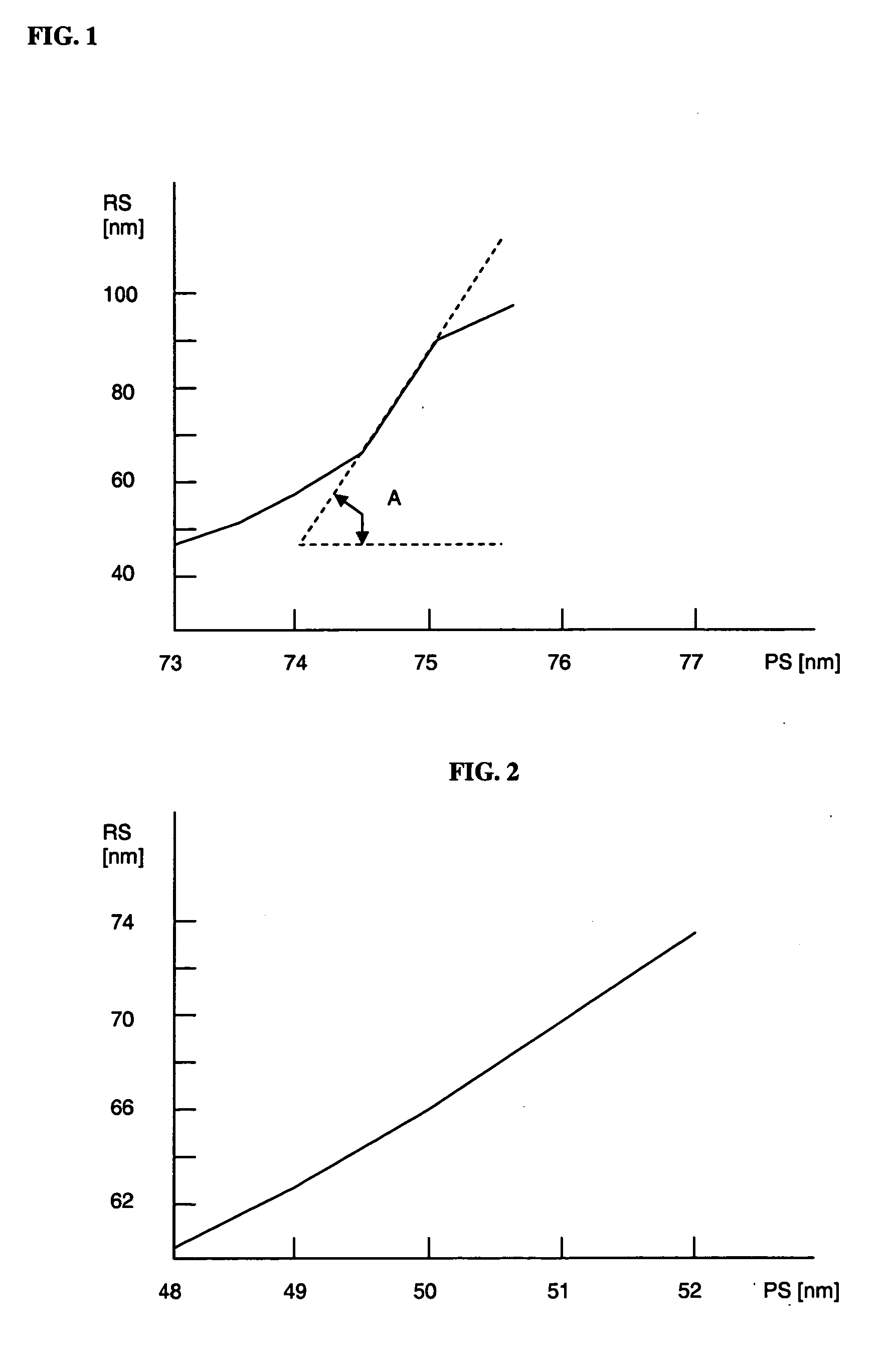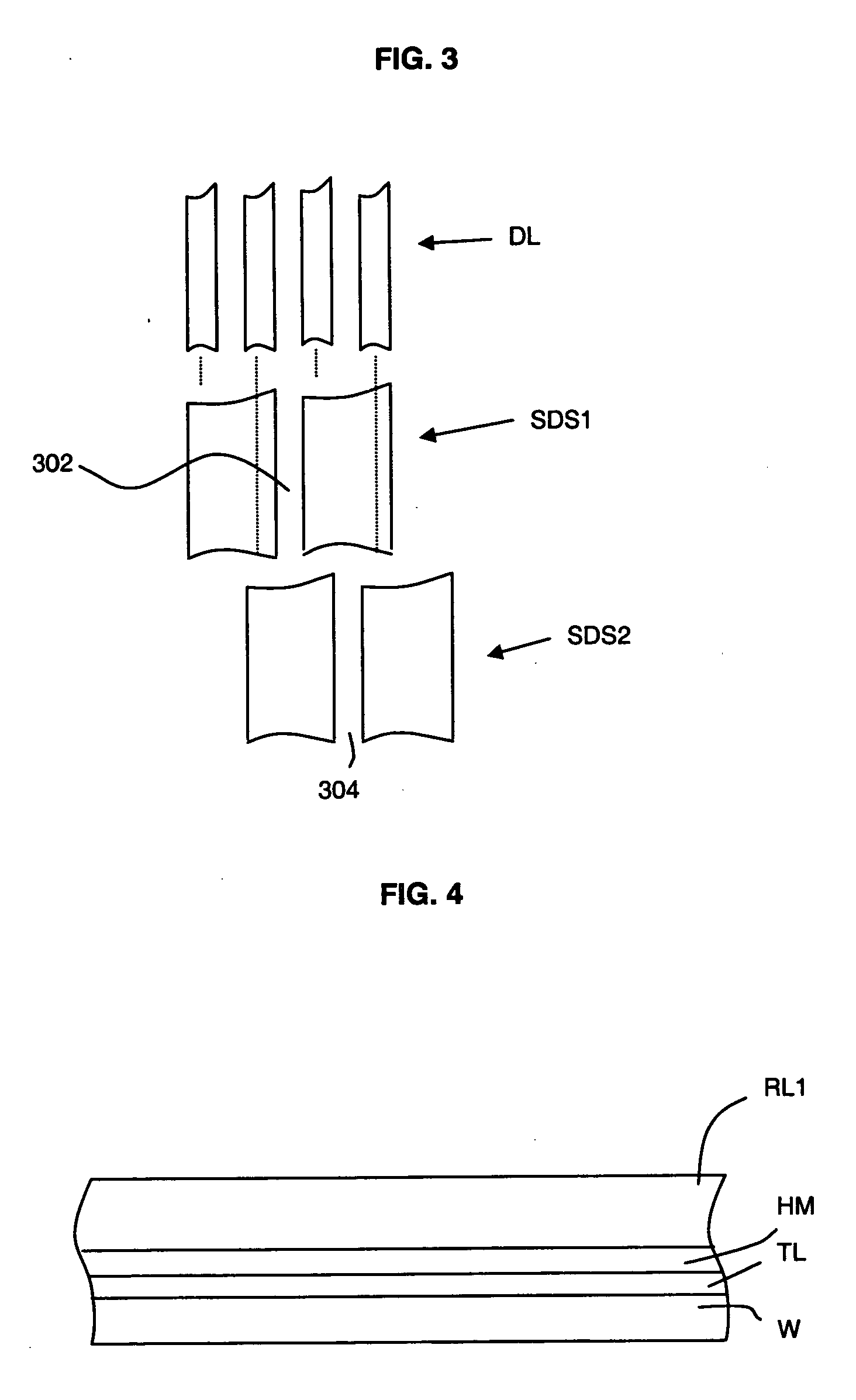Method of patterning a positive tone resist layer overlaying a lithographic substrate
a positive tone resist and lithographic substrate technology, applied in the field of methods, can solve the problems of reducing the performance of the integrated circuit, losing feature fidelity beyond tolerance,
- Summary
- Abstract
- Description
- Claims
- Application Information
AI Technical Summary
Problems solved by technology
Method used
Image
Examples
first embodiment
[0042] According to the present invention, the MEF of this process can be substantially reduced by selecting a value of the bias-ratio BR which is substantially lower than is known from the prior art addressing the problem of mask-pattern feature biasing. For example, in the present embodiment the bias-ratio is chosen to be lower than 0.8. In the present embodiment the bias-ratio is chosen to be 0.67. This implies that both the lines and the spaces at the mask are embodied as lines and spaces of 50 nm width.
[0043]FIG. 2 illustrates the resulting sensitivity to mask pattern errors under the same conditions as described above, safe that now [0044] TDC=75 [nm] / 100 [nm]=0.75, [0045] PDC=50 [nm] / 100 [nm]=0.5, and [0046] BR=PDC / TDC=0.67.
[0047] The MEF is reduced to a value in a range between 2.9 and 3.8.
[0048] In the present embodiment, the required target duty cycle TDC=0.75 is obtained by adjusting the exposure dose to compensate for the pattern duty cycle PDC being set at 0.5 instead...
fifth embodiment
[0058] According to the present invention, there is provided a double exposure method of patterning a material layer, at least partially overlaying a lithographic substrate, with a desired dense pattern of spaces and lines DL, as schematically indicated in FIG. 3. The method comprises two successive positive tone resist layer patternings, whereby the spaces 302 and 304 of two respective target patterns, a target pattern SDS1 and a supplementary target pattern SDS2, are positioned in interlaced position with respect to each other. The patterns SDS1 and SDS2 are transferred to the material layer to provide the desired pattern DL.
[0059] In the present embodiment, and as illustrated in FIG. 4, the substrate W, which may carry previously processed IC layers, is provided with a target layer TL, a hard mask layer HM on top of the target layer TL, and a positive tone resist layer RL1 on top of the hard mask layer HM.
[0060] The first patterning with a target pattern SDS1 having a target dut...
sixth embodiment
[0071] According to an aspect of the present invention the fifth and sixth embodiment are not limited to the specific values chosen for the target duty cycles and the pattern duty cycles. For example, in analogy with the single exposure processes according the present invention, target duty cycles may have a value between 0.7 and 0.8, and pattern duty cycles may have a value between 0.2 and 0.55.
[0072] According to a further aspect of the invention, any of the embodiments described above is not limited to patterns comprising lines and spaces. The invention is generally applicable to printing features such as for example trenches arranged in semi dense patterns (using single exposure processes according to the present invention) and dense patterns of trenches (using double exposure processes according to the present invention).
[0073] According to a seventh embodiment of the invention a double exposure printing method uses two exposures as described in the fourth embodiment, whereby ...
PUM
 Login to View More
Login to View More Abstract
Description
Claims
Application Information
 Login to View More
Login to View More - R&D
- Intellectual Property
- Life Sciences
- Materials
- Tech Scout
- Unparalleled Data Quality
- Higher Quality Content
- 60% Fewer Hallucinations
Browse by: Latest US Patents, China's latest patents, Technical Efficacy Thesaurus, Application Domain, Technology Topic, Popular Technical Reports.
© 2025 PatSnap. All rights reserved.Legal|Privacy policy|Modern Slavery Act Transparency Statement|Sitemap|About US| Contact US: help@patsnap.com



